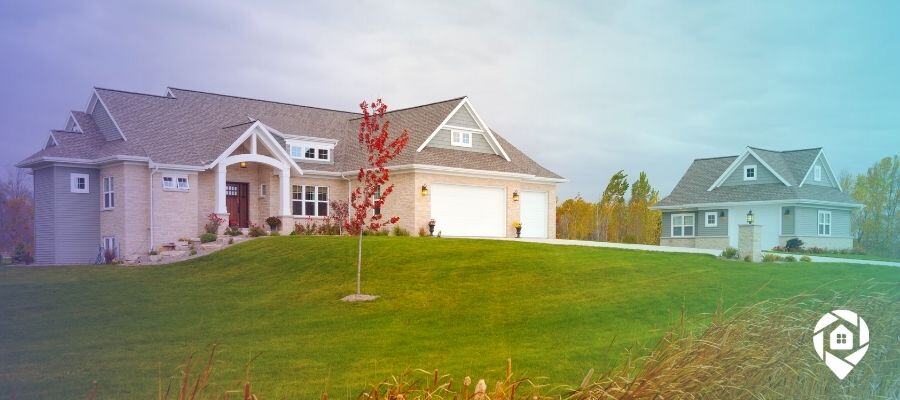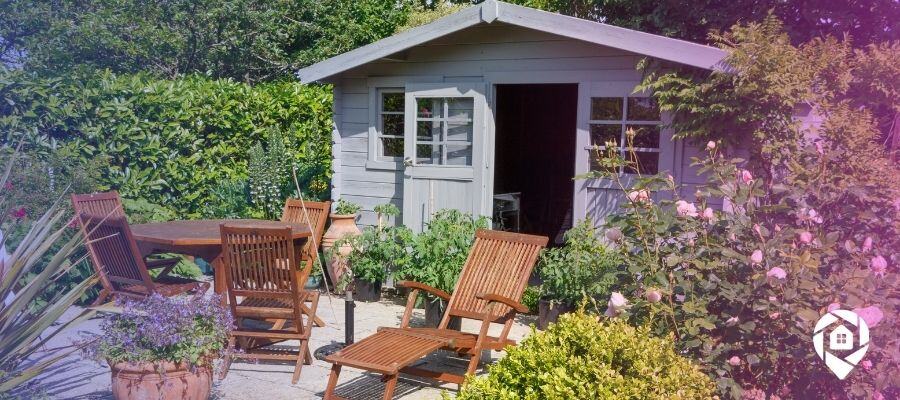
Are Accessory Dwelling Units Worth the Cost?

With the ever-evolving landscape of the real estate market, a question that frequently pops up among real estate investors is - "Is it worth building an Accessory Dwelling Unit (ADU) for real estate investing?" We've created this guide to help break down if it is worth the costs. From benefits to costs to potential ROI we cover it all. Let's dive in!
What is an ADU?
An Accessory Dwelling Unit (ADU), often referred to as a granny flat, second unit, or guesthouse is an additional, self-contained home located on the same property as a standard, single-family dwelling. They are increasingly seen as a means of addressing the affordable housing shortage, in addition to providing investment opportunities.
The Benefits of Accessory Dwelling Units in Real Estate Investing
ADUs are a great addition to any real estate investing portfolio, bringing multiple advantages to the table:
- Rental Income: An accessory dwelling unit can be rented out to generate steady income, making them attractive rental properties for investors.
- Increase in Property Value: Adding an ADU considerably boosts the overall value of the property.
- Meeting Housing Demands: With the increasing need for affordable housing, ADUs offer a promising solution.
Another major benefit of ADUs is flexibility. Homeowners can use them for short-term rentals, long-term tenants, or even as housing for family members, such as aging parents or adult children. This allows property owners to adjust their strategy based on market conditions or personal needs.
Additionally, ADUs promote better land use by increasing housing options without taking up extra land. Since they use existing residential lots, they help maximize space in cities and suburban areas where new development might be limited. ADUs also provide more privacy compared to apartment rentals, making them an appealing option for tenants.
The Costs of Building an ADU
Costs associated with constructing an ADU can vary greatly depending on size, location, design, and local permit requirements. Expenses to consider include permit fees, architectural design costs, and construction costs.
One of the biggest factors influencing cost is the type of ADU you choose to build. There are different types, including detached ADUs (a separate structure in the backyard), attached ADUs (connected to the main house), and garage conversions. Detached units tend to be the most expensive since they require their own foundation, plumbing, and electrical work while converting an existing garage or basement is usually cheaper.
Another major expense is labor and materials. Prices for construction materials, such as lumber, concrete, and roofing, can fluctuate based on market conditions. Hiring professionals like architects, engineers, and contractors also adds to the budget, and labor costs can vary by region.
Permitting and legal fees are other cost factors that homeowners often overlook. Many cities have strict zoning laws, and getting approval for an ADU may require additional assessments, inspections, and utility connection fees. These can add thousands of dollars to the overall cost.
Utilities and infrastructure upgrades may also be necessary. If your existing electrical, plumbing, or sewage systems can’t handle the additional load, you might need to upgrade them, which can significantly increase costs.
While ADUs can be expensive to build, smart planning and budgeting can help control costs. Researching local incentives or financing options, such as ADU-friendly loans or grants, may also make the project more affordable.
ROI of ADU in Real Estate Investing
When calculating the return on investment (ROI) of your ADU project, consider both the rental income and the potential increase in property value. For instance, if the increase in your property's value plus the projected net rental income exceeds your total investment, you're looking at a positive ROI.
One important factor that affects ROI is rental demand in your area. If there’s high demand for affordable or small rental units, you’ll likely have no trouble finding tenants quickly. In areas where rent prices are rising, an ADU can provide a steady income stream that increases over time.
Financing also plays a role in ROI. If you take out a loan to build your ADU, your monthly payments should be balanced against rental income. A well-financed ADU can generate enough rent to cover the loan and still bring in profit. Some homeowners even pay off their ADU faster by using rental income to make extra payments.
Another key advantage is tax benefits. Depending on your location, you may qualify for tax deductions on mortgage interest, maintenance, and depreciation of the ADU, further improving your overall return.
A well-planned ADU project can lead to long-term financial gains, making it a smart investment for property owners looking to maximize their earnings.
Conclusion
Everyone's circumstances and risk tolerance are different, but the potential for a profitable return is undeniable. As real estate investing continues to evolve, keep an open mind to innovative housing strategies like ADUs. You might find that this is just the boost your investing strategy needs to reach the next level.

About Samantha Ankney
Samantha is the Social Media Manager at DealMachine, where she oversees all social media strategies and content creation. With 3 years of experience at the company, she originally joined as a Media Specialist, leveraging her skills to enhance DealMachine's digital presence. Passionate about connecting with the community and driving engagement, Samantha is dedicated to sharing valuable insights and updates across all platforms.


